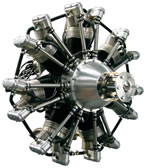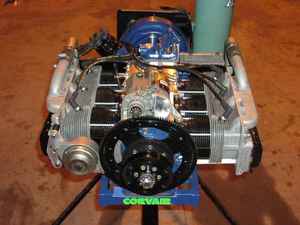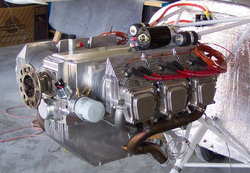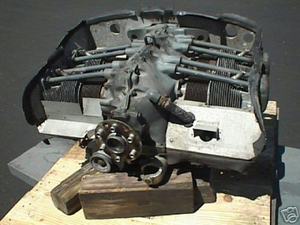Ian's biplane projectWildly revised, August 1, 2011 The planeI'm currently looking for the following characteristics in a biplane design:
What I specifically don't want:
I had previously considered an Acrosport II as being the right thing, but now I'm thinking it's just too big, and too concentrated on acro. Granted, I'm a big person, and it would fit, but it's simply more plane than I want. My list of ponder-planes now looks like this:
The enginesThe current list of "maybe?" engines:
I'd consider Continentals or Lycomings if the plane supported such a heavy engine, but I have a feeling my eventual design will be far happier with a lightweight engine. The first engine I'm considering is the Continental O-200, a 100 HP certified aircraft engine:
The next engine I came across was the Rotec R2800 radial engine, which produces 110 HP: Next, I found William Wynne, who's a huge proponent of converting Corvair engines (100 HP, 220 lbs) for use in airplanes:
Next, the Jabiru 3300 came to my attention -- at 120 HP and 178 lbs, it's got the best power to weight ratio of all the engines I'm looking at: Finally, someone suggested I check out the Lycoming O-235, which I've seen referred to as between a 100 and 135 HP motor (here's why: check out this list of O-235 models):
Engine breakdown (so to speak)The engines stack up against each other like this (on the 1-10 scales, 1 is always "worst" and 10 is always "best"):
On a cost basis alone, it's no contest. The Corvair wins hands down. I can buy replacement parts at any auto parts store. But it's a car engine, and has a relatively unproven record when compared to the aircraft engines. On a reliability basis (pretty important, in the long run), either of the certified engines makes the most sense. However, they're comparatively heavy and inefficient, and they cost a lot, whether you're looking at the initial price or the rebuild/maintenance price. On a "what looks good" basis, there is, once again, no contest: the Rotec radial wins every time. But it's expensive, and has a completely unknown track record. At least Corvair engines have been flying since the 1960s, and I'd have a decent amount of trust in one. Not so the Rotecs. On a cost and power:weight basis, the Jabiru is the clear choice. I've heard good reports about these engines in Europe, and I could be swayed with a bit more research. However, they're relatively new, and relatively unknown when compared with the Continental or Lycoming. The relatively high power:weight number also gives me pause, although I'd buy that modern materials make a big difference. Overall, I'm stuck. Each engine has something to recommend for it, and to recommend against it. A reliable engine is great, but if I can't afford to fly it, what's the point? A cool looking engine is neat, but if I'm afraid to fly it, again, what point? The Jabiru 3300 actually seems to strike the best balance in my mind right now. A final factor which may prove to be very important is insurability. If I can't get insurance with a given engine, that pretty much takes it right off the list. The certified engines are just about guaranteed to be insurable. The others, well, who knows? I'll find out when I go to ask about insurance. Instruments and avionicsThis is the minimum set of instruments and avionics I've been thinking I'd want: Flying instruments:
Engine instruments:
Avionics:
Lights:
Created by Ian Johnston. Questions? Please mail me at reaper at obairlann dot net. |




